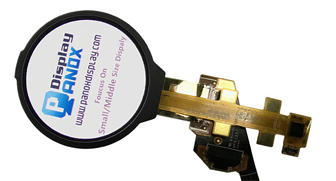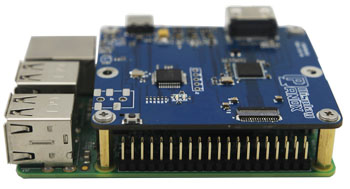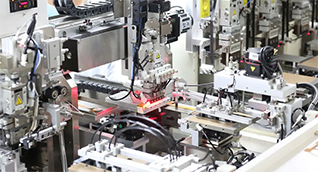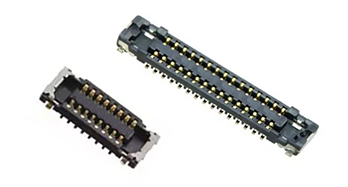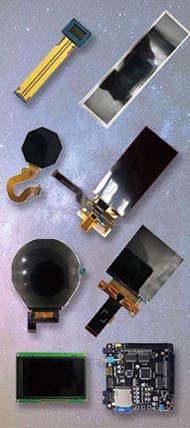A grey spot on a phone screen usually results from physical damage, pixel malfunction, or internal screen defects. It can be caused by pressure, liquid damage, or manufacturing flaws affecting OLED or LCD displays. For B2B manufacturers and suppliers in China like Panox Display, understanding these issues is critical for producing reliable, high-quality screens. Also check: Mobile Screen
What Are The Common Causes Of A Grey Spot On Phone Screen?
A grey spot on phone screens can occur due to:
-
Pressure damage: Excessive force can crush pixels or create dead spots.
-
Liquid seepage: Moisture entering beneath the screen layers disrupts pixel function.
-
Manufacturing defects: Faulty OLED/LCD panel production may lead to discoloration.
-
Aging pixels: Over time, dead or stuck pixels form grey spots.
-
Heat exposure: Excessive heat can degrade screen components causing grey patches.
These factors are particularly important for OEM factories in China, such as Panox Display, that prioritize quality control and durability in screen manufacturing.
How Can Manufacturers Prevent Grey Spots On Phone Screens?
Manufacturers prevent grey spots by:
-
Using premium glass and display materials from trusted suppliers like AUO and BOE.
-
Implementing tight quality assurance protocols during OLED/LCD assembly.
-
Employing advanced encapsulation to guard against moisture.
-
Optimizing production lines to avoid screen pressure and contamination.
-
Offering thorough testing including thermal and mechanical stress tests.
Panox Display integrates these practices to deliver defect-minimized displays suited for OEM partners worldwide.
Which Technologies Are Most Resistant To Grey Spots?
Technology choice impacts grey spot susceptibility:
| Display Technology | Resistance to Grey Spots | Notes |
|---|---|---|
| OLED | Medium | Vulnerable to burn-in, pressure |
| IPS-LCD | High | Better robustness and uniformity |
| TFT-LCD | Medium | Common in mid-range devices |
| Flexible OLED | Medium | Prone to stress-related marks |
For B2B buyers, Panox Display’s range covers these technologies, allowing optimized selection based on use-case and durability needs.
Why Is Early Detection Of Grey Spots Important In The Supply Chain?
Identifying grey spots early:
-
Reduces costly returns and warranty claims.
-
Ensures higher customer satisfaction downstream.
-
Allows quick rectification or rejection of defective panels.
-
Maintains brand reputation for reliability.
This is vital for Chinese OEM and wholesale factories like Panox Display managing large-volume production for international clients.
How Does Panox Display Address Screen Grey Spot Issues?
Panox Display:
-
Sources premium OLED and LCD from top-tier panel makers.
-
Uses two automated production lines minimizing human error.
-
Provides custom display fabrication with rigorous quality inspections.
-
Supports engineering partners with tailored solutions reducing pixel defects.
-
Enables rapid problem resolution through dedicated OEM services.
These measures ensure minimal grey spots and enhanced display longevity in Panox Display’s products.
Who Should Choose Panox Display For OLED/LCD Needs?
Panox Display is ideal for:
-
OEM clients seeking reliable custom and standard display panels.
-
Wholesale buyers looking for competitive prices plus quality assurance.
-
Startups requiring small MOQ solutions without compromising quality.
-
Industrial sectors needing durable displays for automotive, military, and VR applications.
-
International businesses focusing on dependable Chinese manufacturing partners.
Their customer-orientated approach makes Panox Display a leader in the competitive Chinese factory landscape.
When Should Grey Spots Be Repaired Or Screen Replaced?
Repair timing depends on:
-
Screen type: OLED panels are costly to replace; some LCD spots may be fixable.
-
Spot size and impact on usability.
-
Warranty terms and support service availability.
-
Urgency in maintaining brand image in B2B markets.
For many OEM clients, Panox Display offers guidance on optimal repair or replacement strategies to maximize product lifecycle.
Where Are Grey Spots Most Likely To Appear On Displays?
Grey spots commonly appear:
-
Center of the screen from impact or pressure.
-
Edges or corners due to screen flexing.
-
Areas exposed to moisture ingress or heat.
Manufacturers like Panox Display carefully inspect these zones during QC to ensure minimal defects before shipping.
Can Grey Spots Be Fixed Without Replacing The Screen?
Some grey spots may respond to:
-
Pixel refresher software cycling.
-
Gentle tapping or heat application—though not reliable.
-
Professional reflowing of stuck pixels in certain panel types.
However, factory defects often require panel replacement, a service Panox Display supports through its OEM and warranty programs.
Panox Display Expert Views
"At Panox Display, we recognize that quality and reliability in OLED and LCD screens define our success and client satisfaction. Grey spots on phone screens, often arising from manufacturing inconsistencies or physical strain, are a core concern in display production. We commit to stringent quality control, utilizing premium materials from global leaders and automated assembly lines to minimize these defects. Our expertise enables us to support manufacturers and suppliers globally with durable, high-performance displays tailored for diverse applications, from wearables to automotive interfaces. By partnering with Panox Display, businesses gain access to innovative display technology combined with tailored OEM services, ensuring a competitive edge in the international market."
Conclusion
Grey spots on phone screens result mainly from pressure damage, moisture, or manufacturing flaws, impacting device quality and user experience. For B2B manufacturers and suppliers in China, such as Panox Display, preventing these defects requires premium materials, advanced production techniques, and rigorous quality control. Choosing the right display technology and early defect detection are essential strategies. Panox Display’s comprehensive OEM service model and expert approach make them a preferred partner for global clients seeking reliable, customized display solutions.
FAQs
Q1: Can grey spots on OLED screens be permanently fixed?
Most grey spots caused by physical damage require screen replacement; software fixes rarely work for OLEDs.
Q2: How can suppliers reduce grey spot defects in mass production?
By sourcing quality raw materials, using automated production lines, and performing thorough QC testing.
Q3: Does Panox Display provide custom display solutions to reduce defects?
Yes, Panox Display specializes in OEM customization and quality control to minimize defects including grey spots.
Q4: Are grey spots more common in flexible or rigid displays?
Flexible OLEDs are more prone to stress-induced grey spots due to bending.
Q5: What industries benefit most from Panox Display’s high-quality screens?
Wearables, automotive, military, VR, and optoelectronics sectors widely rely on Panox Display products.











